Pageanteers in the Archives 1: Gwen Lally: a Pageant Master in the making.
*Guest post by Ellie Reid, Oxfordshire History Centre*
Edwardian pageants had many hundreds of performers but the names of the ‘pageanteers’ are often unrecorded and can be difficult to discover. In his autobiography Louis N Parker, originator of the Edwardian pageant, recorded advice to future pageant-makers stating: ‘The performers must all be anonymous. A pageant may include four or five thousand performers. It is obviously impossible to name them all; but the humblest member of the crowd is just as important, gives just as much time to rehearsals, and is at least as enthusiastic as the most brilliant soloist.’ He was keen to acknowledge the contribution individuals made but required anonymity of the pageanteers to encourage the audience to believe in their performance. His insistence on anonymity was also practical as the sheer number of performers and likelihood of last minute changes, made the task of compiling and updating lists a daunting one. The official programmes of his and other pageants of the period, therefore listed patrons, subscribers, members of the organising committees and sometimes principal performers but not the full cast. The vacuum was filled, in some cases, by local publishers who produced listings in newspaper reports and unofficial publications, thereby acknowledging the desire of the pageanteers to have their contribution recorded and recognizing that the audience would naturally have had an interest in who they were watching. The Yorkshire Herald, for example, published a 102 page souvenir booklet of Parker’s York Historic Pageant of 1909, which reproduced a list of performers from the newspaper.
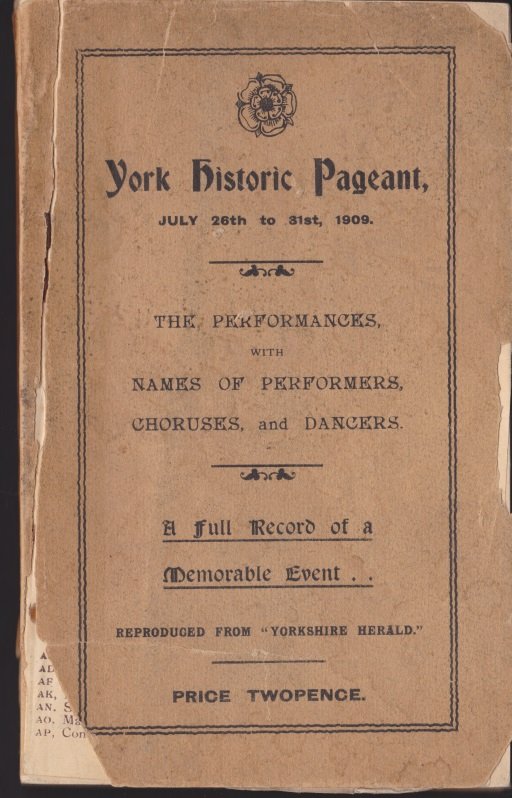
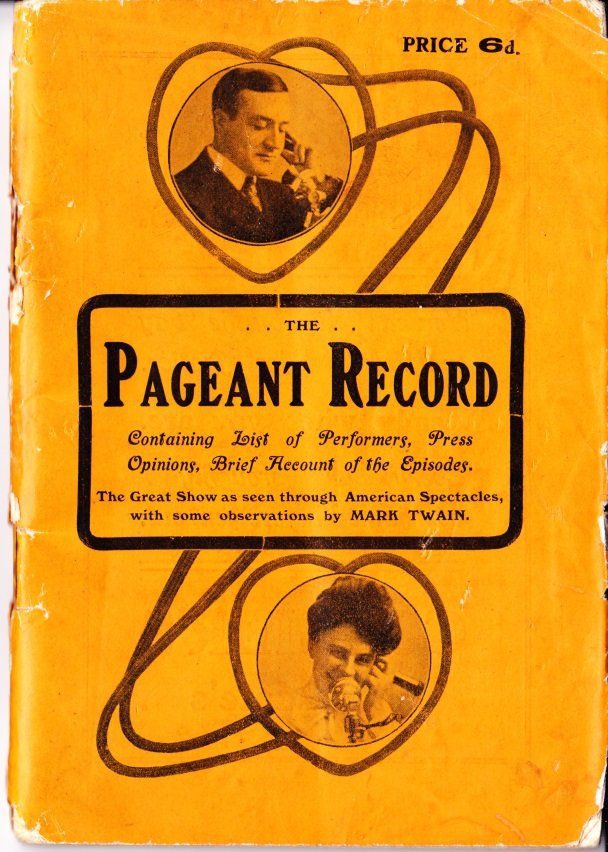
The official publications produced for Frank Lascelles’ Oxford Historical Pageant 1907 followed Parker’s lead in excluding a full list of cast members. This omission gave rise to the publication by the proprietors of the Clarendon Hotel of The Pageant Record: Containing List of Performers, Press Opinions, Brief account of the Episodes. For 6d, this booklet sought in 64 pages to provide an alternative to the official souvenir and Book of Words. The introduction explicitly states that it would not: ‘give that chestnut list of names “to whom we are indebted,” served up in such a dry style that you could sleep over it standing up.’ Instead, it lists ‘in appreciation of their efforts,’ hundreds of the men, women and children who were pageanteers, from principal performers to members of the crowd. It provides an invaluable record of the names of many of the participants but having been published just in advance of the performances, The Pageant Record encountered the problems Parker described. The listing of the fourth episode ‘King Henry II gives a charter to the City of Oxford’, for example, names many of the performers but the identity of the Henry II performer is recorded as ‘Not settled’ and the character of Queen Eleanor is missing.
The descriptions of the episodes contained in The Pageant Record appear to be derived from those in an official booklet printed by the Oxford Chronicle, to advertise the Oxford Pageant. 50,000 copies were produced and it was planned that ‘Thirty thousand will be sent through the post to the principal people of Briton’ to promote the event and encourage ticket sales.
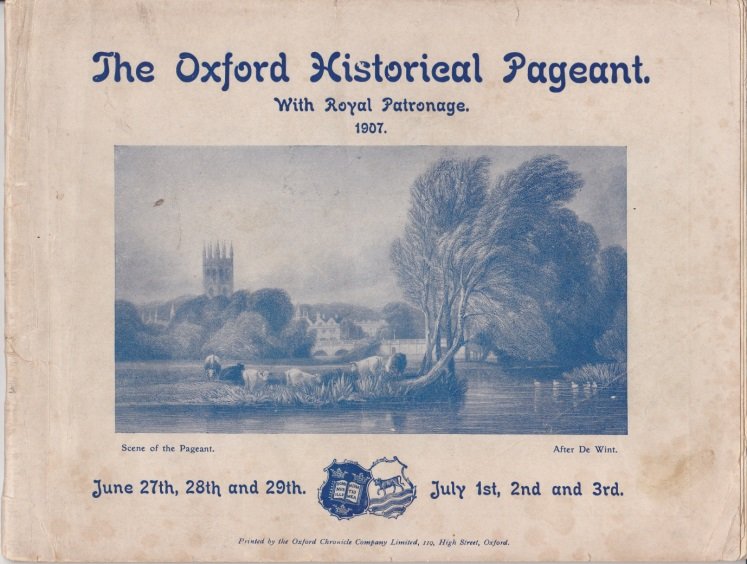
This early publication did not therefore describe the pageant in its final form and reports show that changes were made as the rehearsals progressed, and not without controversy. A correspondent to the Oxford Times in May 1907 complained that having understood that the pageant was to be an entirely local effort and dependent upon city and county residents for the success or failure of the performances, many ‘residents have been used, superseded, and insulted in various episodes’ as ‘new outsiders are brought in for the more important parts (Oxford residents being too incapable)’. In June 1907, The Isis reported that there had been numerous cuts to the dialogue reducing the length of the performance to three and a quarter hours and that it was hoped to reduce it further in the final event. It also provided a list of the performers of the chief speaking parts that was more up-to-date than the information in The Pageant Record and may have reflected changes to the cast alluded to by the Oxford Times correspondent in May. The shortcomings of the unofficial Pageant Record may have motivated the pageant organisers to produce their 16 page Official Programme, priced 3d, which was published after all the 5/- tickets were sold out. This included a revised description of the episodes and a listing of the principal performers but cited lack of space for not listing the names of all 3,000 performers.
One consequence of the lack of cast listings and the changes made to the episodes as rehearsals progressed, is that the participation of individuals can be unrecorded or not evident. The June 22nd edition of The Isis provides information about the fourth episode which is missing from the Pageant Record. It names Sir Roger Curtis of Keble College, as taking the part of Henry II and records that: ‘The honour of being among the most imposing and picturesque figures in the pageant falls to Miss Lally (Queen Eleanor) [and others]’. The revised description of the episodes and listing of the principal performers in the 16 page Official Programme provides further information, describing the role of Queen Eleanor and recording the performer, Miss Gwendolen Lally. The official Souvenir of the Oxford Historical Pageant 1907 produced in June describes the fourth episode in detail and includes a portrait of ‘Queen Eleanor’ which appears to be Gwen Lally, but the identity of the performers photographed is unrecorded.
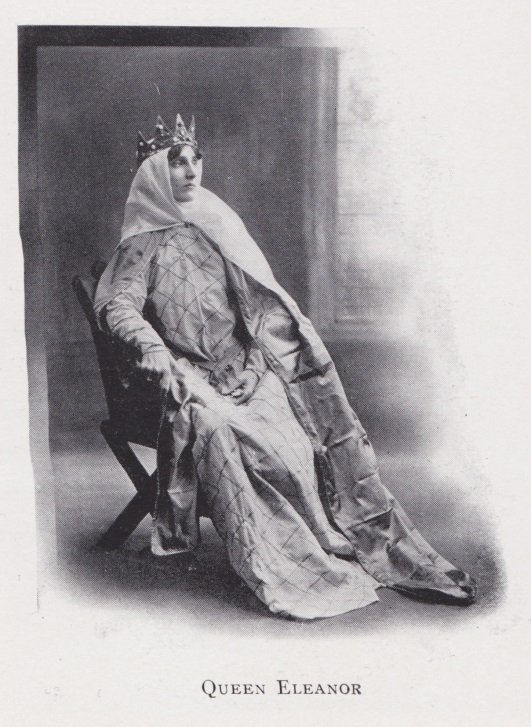
The absence of listings of the pageanteers prompted the owners of programmes or Books of Words to annotate their copies with the names of the performers, or to use them as ‘autograph books’. Official programmes and Books of Words do survive in great numbers so individual copies with handwritten annotations and enclosed ephemera that are held in archive collections, can provide details that can add considerably to the historical record. A particularly well annotated copy of the 1907 Oxford Historical Pageant Book of Words, held at Oxfordshire History Centre, records Gwen Lally’s involvement in the pageant, even though her role is not present in the published script.
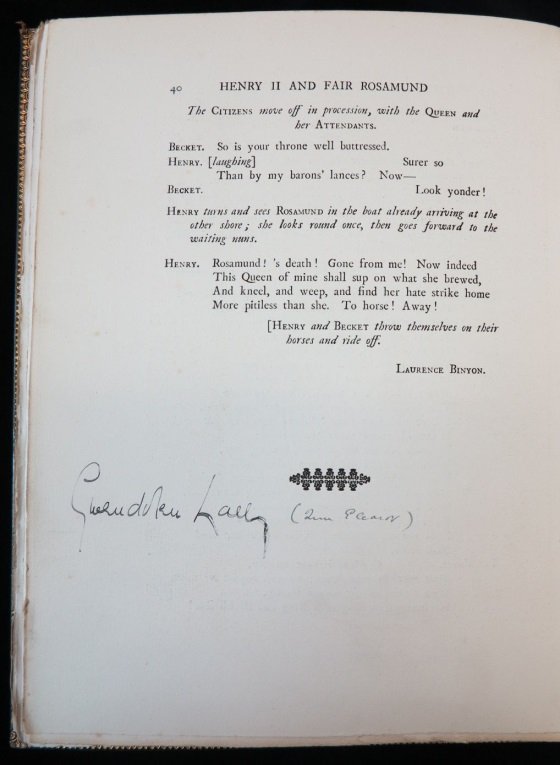
It is unclear from these sources as to when Lally became involved in the pageant and whether her role was subject to any controversy. As the daughter of the vicar of Wroxton (a parish close to Lascelles’ Sibford Gower), she could have been considered ‘of the county’ but she was also an actress under the management of Sir Herbert Beerbohm Tree, who was Lascelles’ mentor and Dramatic Advisor to the Oxford Historical Pageant. The role of Queen Eleanor seems to have been an addition to the Henry II and Fair Rosamund scene in the fourth episode, a role that would have added drama to the scene by signifying the legend of Queen Eleanor’s alleged poisoning of Rosamund. What is apparent though is that her participation at Oxford when aged 25 and at the beginning of her theatrical career, seemingly had a lasting significance as she went on to become a notable and prolific ‘Pageant Master’.
Sources:
The Isis, No. 368, June 22, 1907
The Oxford Historical Pageant.(1907) Oxford Chronicle Company Limited, Oxford
The Oxford Historical Pageant Book of Words. (1907) University Press, Oxford for Oxford Pageant Committee.
Oxford Historical Pageant June 27th to July 3rd, 1907, Official Programme. (1907) Hall and Sons Printers, Oxford
The Pageant Record (1907) Fox Jones & Son, Oxford for the proprietors of Clarendon Hotel
Parker, Louis N. (1928) Several of my lives. Chapman & Hall, London
Souvenir of the Oxford Historical Pageant 1907. (1907) Cheney & Sons, Banbury under authority of the Pageant Committee
York Historic Pageant July 26th to 31st, 1909: The performances with names of performers, choruses, and dancers. (1909) Yorkshire Herald, York
Newspaper cuttings in scrapbooks privately held.
